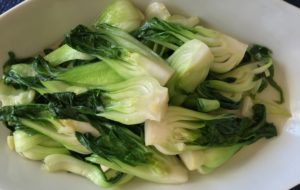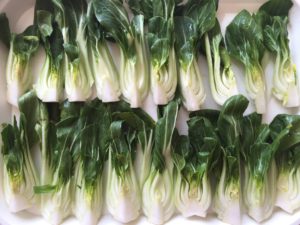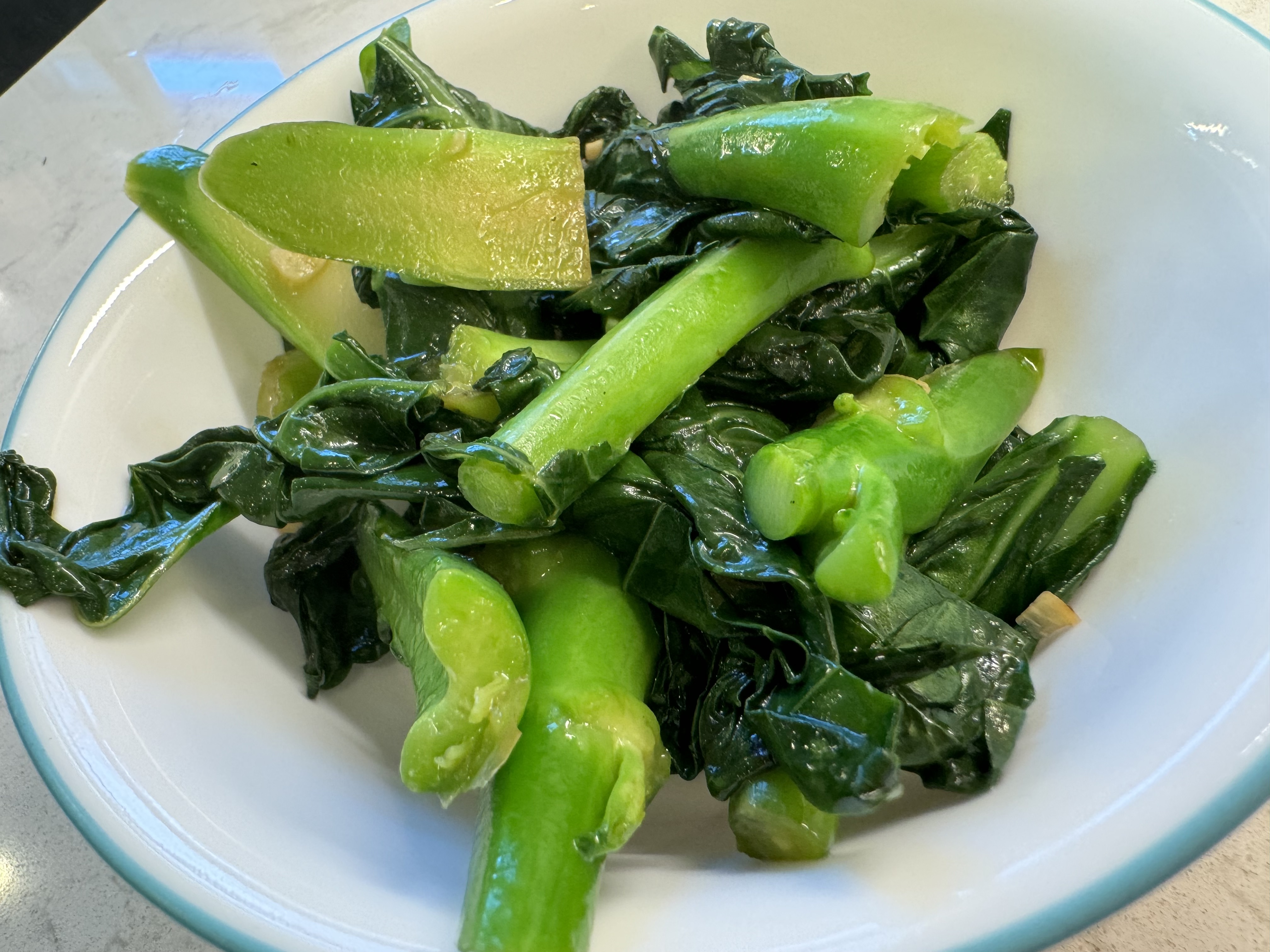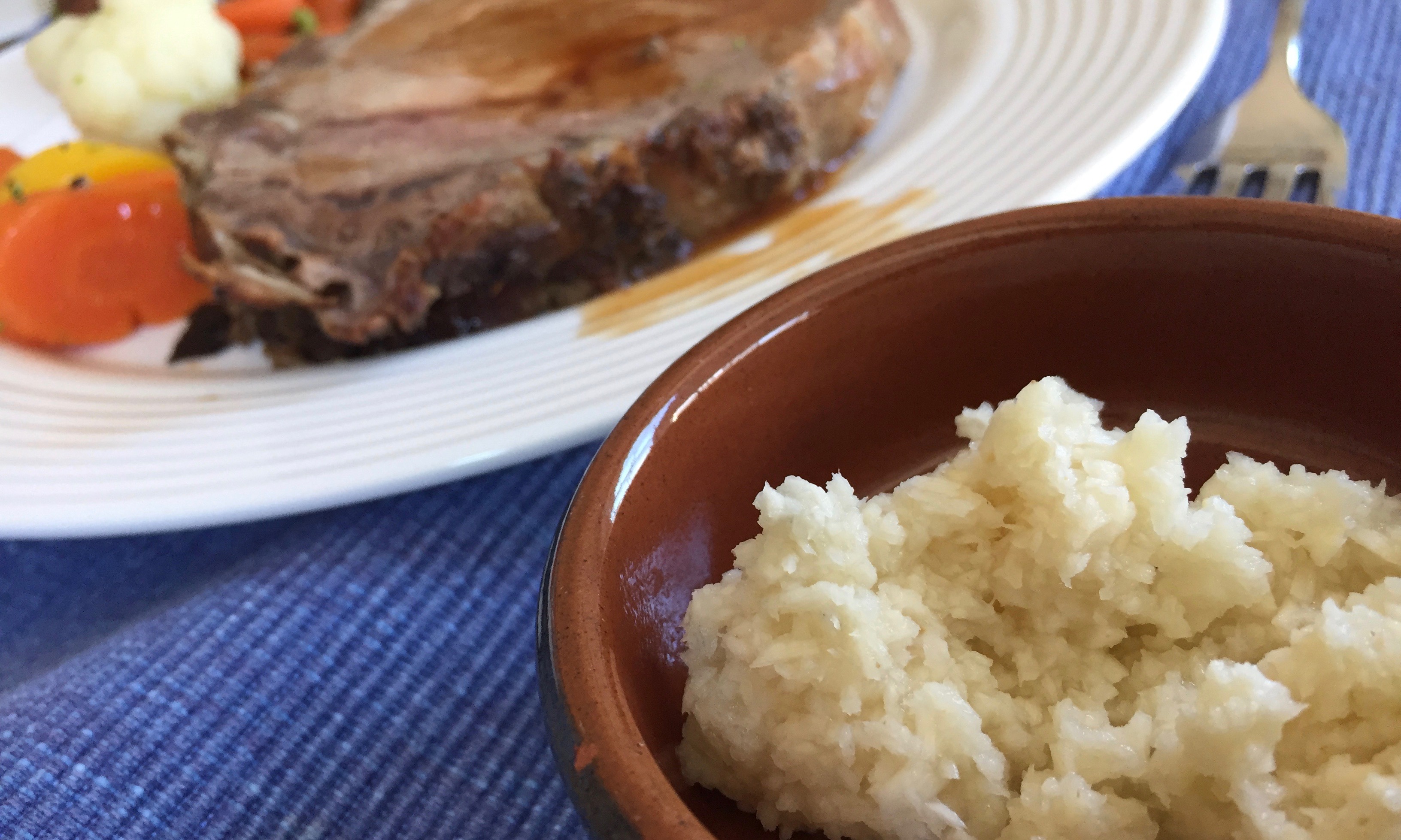
Frying veggies is the simplest stir fry. This is it: Heat a wok, add oil and heat oil, add garlic, fry, add veggies and fry a bit more. This is an everyday dish we take for granted until we leave home, can’t get our daily dose of veggies and go into fiber withdrawal.
Cleaning leafy greens is the most laborious part of cooking them. Do it well because they may harbor guck between the stalks and on leaves. If you are in a hurry, use easy-to-wash vegetables like broccoli, green beans and pre-washed veggies like spinach.
Chinese vegetables for stir fry is so varied. The Cantonese love their choy sum, gailan, bak choy and watercress. Taiwan love their Aa cai, Taiwanese bai cai, Shanghai bai cai and dou miao or snow pea shoots. My friends from Shanghai and Nanjing, love their Napa cabbage, and wosun, the last of which I had never seen until I lived here. There are a lot more varieties.
Go to a Chinese supermarket to check out the varieties. Try this simple stir fry. These leafy greens are delicious and, as my Popo used to say, good for you.
Quick Fried Chinese Greens
Basic recipe
Preparation time 5-10 minutes
Cooking time: 5 minutes
¾ pound Shanghai bai cai
2 cloves garlic, chopped or smashed
1 tablespoon peanut oil
Salt to taste

Wash vegetable, cut in quarter lengthwise as shown right, and drain thoroughly.
Heat a frying pan or wok. Add and heat oil until oil is shimmering. Fry garlic quickly and immediately add vegetables. Fry quickly for 30 seconds. Sprinkle salt on vegetables. Lower heat to medium high and fry thoroughly until stems are cooked. That’s it.
NOTES
–Toss well. The trick to Chinese stir fry is in the way you flip the vegetables over so that all leaves touch the hot surface of the whole wok. Don’t just stir the vegetable. Slip your spatula under the vegetables and toss it over so that the fresh vegetables on top goes to the bottom of hot pan.
In classic Chinese stir fry, we use Chinese spatulas called wok chan, which is designed to scrape the bottom of the wok to scoop ingredients up to the top. Therefore when frying vegetables, you can hear the frying of the vegetables with the metal scraping tok tok tok of the wok chan! Happy sounds of cooking.
–Don’t overload your wok. In a home kitchen, for a 12-inch pan or wok keep portion to about ¾ pound so the surface stays hot enough for ingredients to get fried. The smaller the volume, the better your food will taste. If you have more vegetables cook in two batches.
WHAT GETS TRICKY: Moisture from vegetables not drained thoroughly will cool the pan too fast, ruining its wok essence. Pick up damp vegetables by hand to put into the heated oil. If you tip the colander over, you might throw in water collected at the bottom.
–Pan should be heated well and oil shimmering. You should have that sizzling “cha-a-r” sound when the veggies are tossed in. Otherwise it’s done wrongly. Enjoy your boiled vegetables.
Variations
-Instead of cutting bai cai in quarters, you can also cut the vegetable in 2-inch sections. Place lower stems separate from leaves. I usually put the leaves at the bottom of the colander and the stems on top. That way you can fry the stems (which take longer to cook) before the leaves.
Different seasonings
–Include ginger, shallots or fresh chili. Add to hot oil with garlic.
–Reduce salt and replace with 1 tablespoon of fish sauce or oyster sauce. We don’t tend to use soy sauce in fried veggies.
–Splash a little (1 tablespoon) Shaoxing wine into pan towards end of cooking.
Glossary of Ingredients
Click here for more on:
Shanghai bai cai




Thank you for this. The explanation of how to cook the bai cai is so helpful.